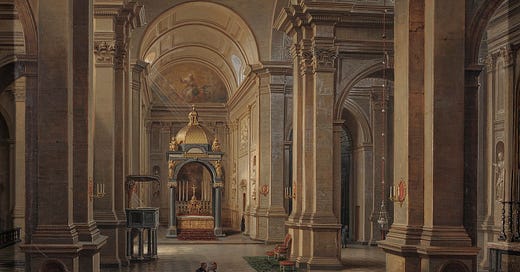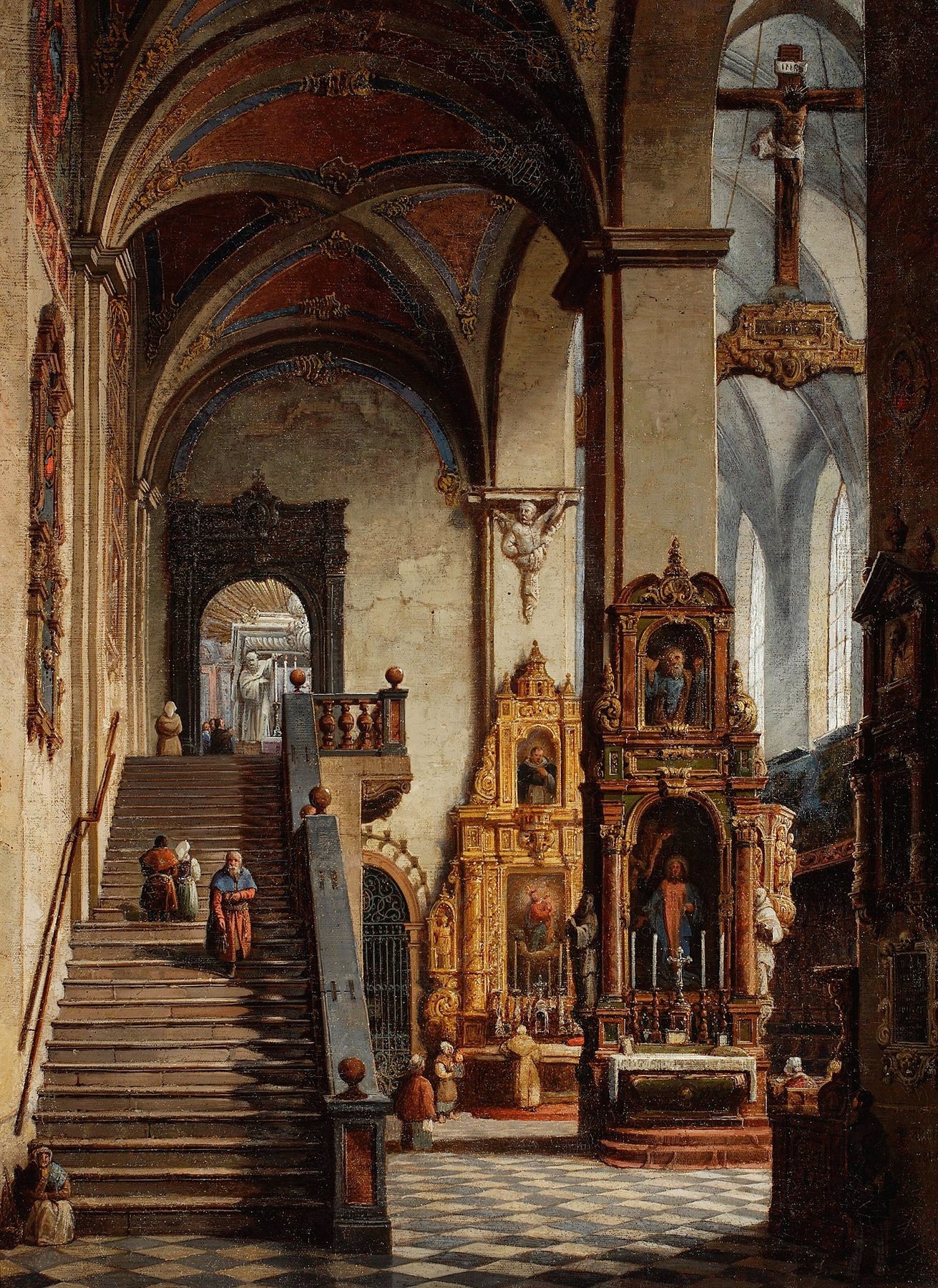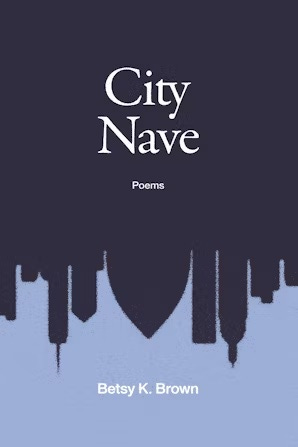Poems as Buildings, Collections as Cities
Betsy K. Brown | Examining the architecture of poetry
This Mid-Week Edition of Ecstatic features Betsy K. Brown
Fresh poetry books come into being in a number of ways, but I imagine many of them come together accidentally.
While I was writing the poems that would eventually appear in my book, City Nave, I was also teaching eighth grade medieval history. Every February, after the architecture unit, my students designed models. My classroom would become a miniature city of cathedrals, castles, and mosques. Students made their projects out of cardboard, clay, Styrofoam, sugar cubes, and wood. Some made stained glass windows out of paint, beads, or melted candy. Others built removable roofs and intricate interiors. A few illuminated theirs with lights or covered their buildings in fluffy artificial snow.
Meanwhile, I wrote poems: about nature, love, death, teaching, and (more often than I realized at the time) architecture. Each poem, like a tiny cathedral, was built out of the material I found in my home or on my travels. Some were tidy and ordered in beautiful patterns; others were messy, raw, and pasted together. My poems were not built with a city in mind.
They materialized individually, often spontaneously, over the course of ten years. I knew eventually I wanted to compile them into a collection, but that collection did not have a unified theme or narrative arc. Only later, when I spread the smattering of word-structures before me, did I start to see how it would fit together into a book.
The creative process can seem fragmented at first, perhaps even a little manic. As Frost once said, a poem’s “most precious quality will remain its having run itself and carried away the poet with it.” While writing, we become so immersed in the present creative moment that it is often challenging (and possibly even damaging to our work) to have an entire collection in mind as we “run away” with a new poem. That is the power of the creative act.
But later, looking back, poets often realize that their bursts of creative inspiration were linked together under the surface by threads of continuity. They eventually arrange their poem-buildings in particular orders (streets), and into chapters (neighborhoods), and they discover that they all along were preparing a unified city. For me, this meant that when I compiled a decade’s worth of poems and divided them by theme, I realized I had accidentally written a book about architecture.
While not every poem in my collection is about a skyscraper or cathedral, buildings run through it as a loose thread, and the interior reality of “soul-architecture” became a central fascination. My confirmation saint is Teresa of Avila, author of The Interior Castle, in which she “thought of the soul as resembling a castle, formed of a single diamond or a transparent crystal, and containing many rooms, just as in Heaven there are many mansions.”
Similarly, Richard Foster says people in prayer may possess “a portable sanctuary of the heart.” And so I structured my book as a journey into my own heart-sanctuary: the sections in order are entitled “Stairs,” “Narthex,” “Nave,” and “Altar.”
“Stairs” is full of poems about being on the periphery. They are poems of longing and indecision. The second section, “Narthex,” is about stepping into a sort of antechamber. It is a place of flirtation with the divine. The “Nave” is the long central aisle of a church. Its name has its roots in the Latin word navis, which means ship.
The first line of the titular poem is, “Stand on your head. You’ll see that she’s a boat.” A nave is a place of refuge and of progress. Processions down the nave of a church are often the most important moments of our lives: weddings, funerals, and confirmations. We proceed toward the altar, which is also where we find ourselves in the final section of my poetic architecture.
Since ancient times, the altar has been the place where we meet the divine. I see the altar as the destination—it is a place of sacrifice, contemplation, and restoration. Each poem is a window into a conversion story. However, the beauty of the cathedral procession image is how it mirrors the spiritual journey—it is not a one-and-done trip from stairs to altar. We have to re-enter often. City Nave is a journey from a lonely place to a holy place.
Back to poems as buildings: At the school where I taught medieval history, I also taught high school poetry. One of my favorites to teach was William Wordsworth’s sonnet, “Nuns fret not at their convent’s narrow room.”
I will never forget one of my most theatrical students reciting this poem by boxing himself in with chairs and walking to the edges of his “narrow room” he had made as he quoted the lines aloud. In this poem, the speaker finds “brief solace” in the sonnet’s “scanty plot of ground,” as if the poem itself is a nun’s little cell.
Indeed, a sonnet is a limited piece of land on which to build: only fourteen lines of iambic pentameter, often with a rigid rhyme scheme. It’s one of poetry’s tiny houses, so to speak, along with our beloved haikus and limericks.
However, “Nuns fret not” would argue—and I heartily agree—that the form is freeing, not constricting. Many souls, argues Wordsworth, have “felt the weight of too much liberty.” While I love excellent free verse poetry, I am more and more drawn to formal verse, and I find that its rhythms and rhymes free me to find the right words to fit, words I never would have considered otherwise.
Just as bricks, beams, and buttresses are arranged in a certain order to make a building strong, lines, beats, and rhymes are what make metric verse “sticky”—like our favorite adolescent songs, they will stand solid in our heads for our whole lives. I once heard an elderly Alzheimer’s patient recite folk songs and classic poetry. In his mind were castles, I thought, structures of stone that stood strong long after memories of even his own family had faded away.
Over 60 percent of City Nave is written in metered verse. The free verse poems (in my opinion, at least) are not necessarily inferior, but they often feel younger and greener. While my free verse poems are somewhat like abstract sculpture, made of twists and turns, my metered poems are more like castles and churches. I find I can step back inside of them and find more and more patterns that I did not even realize I was building back when the inspiration hit. And I find, like the man at the Alzheimer’s center did, that lines from these poems are the easiest to recall, and the most likely to stay with me over the years.
One of the smallest and sturdiest student history projects I ever received, a clay model of Notre Dame, still sits on my bookshelf at home, next to some of my favorite collections of poetry. Within these books, small buildings breathe. Outside of these books, a larger city—our library—stands as its own tall skyline. My exhortation to poets is this: don’t worry about the city. If you contemplate the beams, the buttresses, the windows, and the walls, the city will come. And, in the meantime, you can build something that will last, brick by brick, line by line.
Betsy K. Brown
Poet & Teacher
Betsy is a poet, essayist, critic, and curricular writer. Her work has appeared in many outlets, including First Things, New Ohio Review, and AWP’s The Writer’s Notebook. You can connect with her and read more of her work at betsykbrown.com. What did you think of this essay? Share your thoughts with a comment!












Excellent. I’m going to review my collection of poems with a different perspective.
Thank you for such an insightful article. I really enjoyed reading this and, as a writer of both free verse and metered verse myself, totally relate to what you say about the benefits of utilising conventional norms and structures as well as carefully chosen suitable materials